Castles of the Loire Valley
Once the stomping grounds for the French kings, the Loire Valley is lined with impressive castles that draw thousands of tourists every summer (though autumn in the Loire is really spectacular). But with so many castles (or should we say châteaux) to choose from, you may be wondering which ones are must-sees and which ones you can bypass in favor of wine tasting for the afternoon at one of the many vineyards in the Loire or picnicking along the banks of the river. Here’s some information on the best castles to visit in the Loire.
Villandry
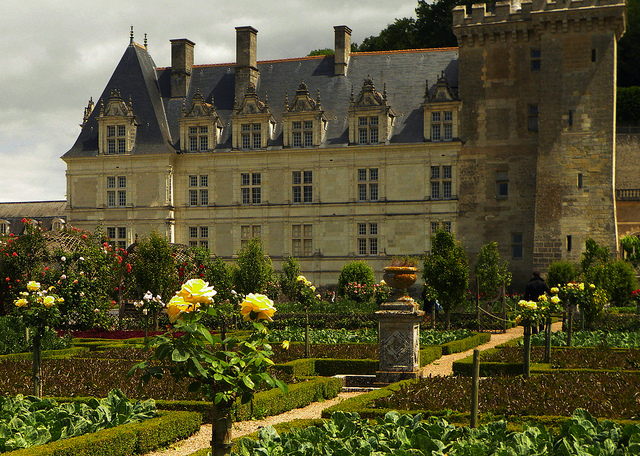
Built by the same man that designed much of Chambord (François I Finance Minister Jean Le Breton), most would think that Villandry might parallel Chambord in terms of architectural immensity; but Villandry is actually most renowned for what is outside of the castle. However, while Chambord remains Le Breton’s main achievement in construction, it is Villandry where he used all of the Renaissance gardening tricks he had picked up while working as an ambassador in Italy. The castle remained in the Le Breton family until the early 20th century, when it was purchased by Joachim Carvallo, who spent a whole of time, money and devotion to rebuilding, expanding and repairing the beautiful gardens. Today the gardens at Villandry are considered one of the best examples of Renaissance style gardens in the world and boasts a water garden, flower gardens and vegetable gardens laid out in formal patterns created with low box hedges—making it a must-see on any castle tour of the Loire.
Chambord
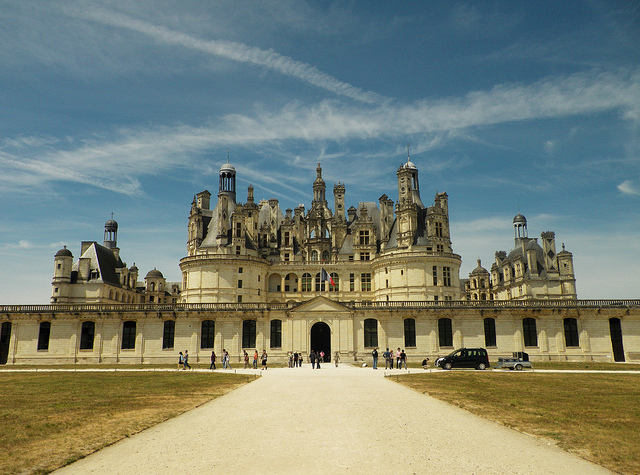
Chambord is one of France’s most recognizable castles known for its distinct French Renaissance architecture, which blends late French Gothic and newer Italian Renaissance motifs. Chambord is also the largest castle in the Loire, putting it at the top of any list. Chambord was first built by King Francois I as a hunting lodge (I know you picture a hunting lodge as being more of a log cabin than a magnificent model of French Renaissance architecture, but it was a KING’S hunting lodge, after all).
Visitors to Chambord will be astonished by its sheer size—it boasts 440 rooms, 365 fireplaces and 84 staircases. It is most known for its façade, which through more than 800 sculpted columns was designed to look like the skyline of Constantinople, with 11 kinds of different towers and different types of chimneys. Chambord also has a double-helix staircase that serves as the centerpiece to the castle and was rumored to have been designed (or inspired) by Leonardo da Vinci during his time at nearby Clos de Luce.
Chenonceau
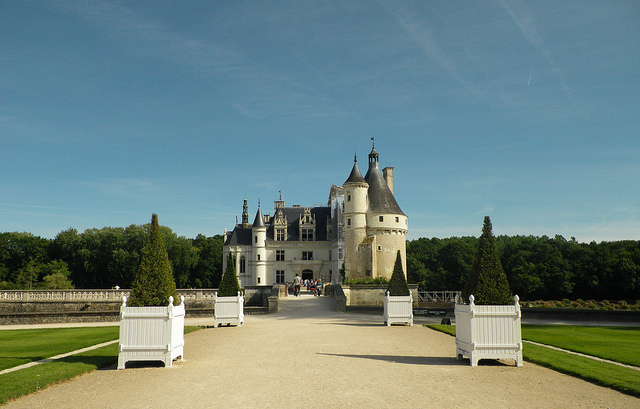
Often thought of as one of the most beautiful castles in the Loire, Chenonceau has always been a favorite château in France. Originally a small castle along the banks of the River Cher, the castle got its current design in the 16th century when it was seized by the crown for unpaid debts. In 1547, King Henri II offered the castle to his mistress, Diane de Poitiers, who became fervently attached to the castle and its view of the river. It was Diane de Poitiers who installed Chenonceau’s recognizable arched bridge spanning the river, as well as the extensive flower and vegetable gardens set in buttressed stone terraces on the grounds.
Upon King Henri II’s death in 1559, his clearly bitter widow and regent Catherine de Medici had Poitiers expelled from the castle and she moved into the scenic spot herself, adding even more extensive gardens. Since then the castle was privately owned for years and even used as a make-shift hospital for soldiers during WWII; its gallery bridge’s southern door provided access to the unoccupied Free Zone while the castle’s main entrance was in the Nazi occupied zone. Chenonceau today is one of the most visited and popular of the Loire castles and its Renaissance architecture, well-lit gallery and beautiful gardens make it a castle you shouldn’t miss.
Amboise

Perched up on a strategic point along the Loire River, Amboise started as a fort. In 1434, the castle was seized by King Charles VII after its owner (from which the castle got its name), Louis Amboise, was convicted and killed for supposedly plotting against the King. It was after this point in the 15th century that the castle was lavishly rebuilt and added onto, starting with its late French Gothic architecture, until Italian builders were brought in and the castle’s style changed to Renaissance.
While the castle became a favorite retreat for many French Kings (King François I was raised primarily at the castle), Amboise’s most famous guest was Leonardo da Vinci, who came to the castle in 1515 as a guest of the King and stayed in nearby Clos de Luce. What is most notable about Amboise, however, is known for its unique blend of Gothic and Renaissance architecture and large formal garden.
Blois
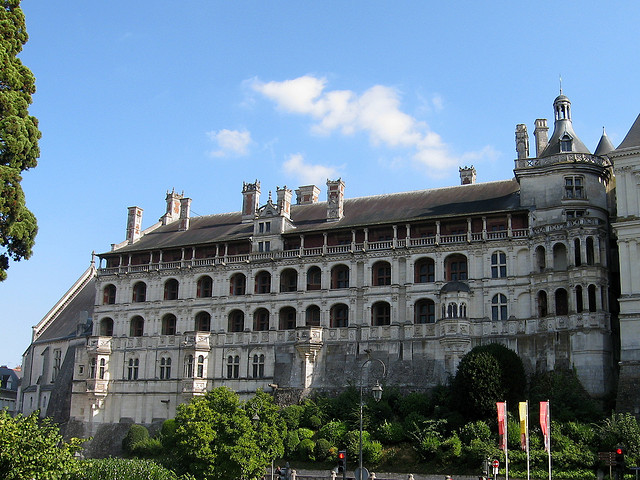
Blois was always a favorite getaway town for French kings; the castle in this quaint little Loire town is best known as the birthplace of King Louis XII as well as the primary residence for Henri IV’s exiled wife Marie de Medici, and later for the Duke of Orléans (brother of Louis XIII and uncle of Louis XIV). However, the castle has a long and prominent history and its Renaissance architecture and picturesque spot along the banks of the Loire make it a definite worthwhile stop on your Loire castle tour.
In fact, the castle was the main resort for the French court during the 16th century and was also the location for the famed States General meetings held by Henri III in 1576 and 1588, where several prominent nobles were sentenced to death. The castle also plays a role in the famous Three Musketeers series by Alexandre Dumas as an important retreat for some of France’s most famous and powerful kings.
Cheverny
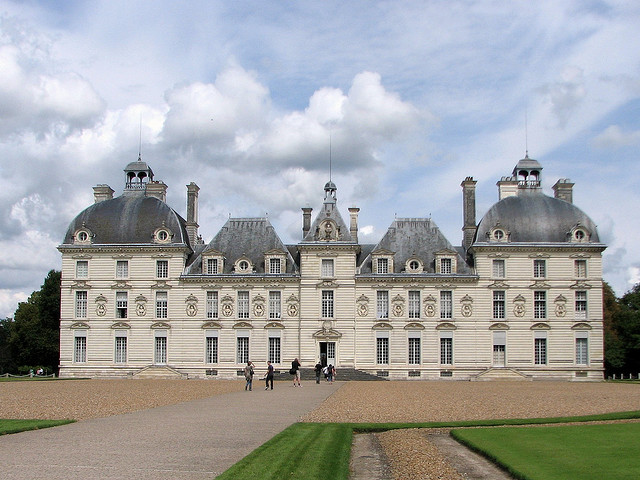
While Diane de Poitiers chose Chenonceau as her favorite and primary residence, it was not the only castle given to her by her lover, King Henri II. In fact, Poitiers sold Château de Cheverny to the former owner’s son who had originally built the castle between 1624 and 1630. The castle passed between owners until 1914, when the owner made it the first castle to be opened to the public; the family still owns and operates the castle to this day. The castle, while not as impressive in size or architecture as nearby Amboise or Chenonceau, is renowned for its beautiful interirors and collection of furniture, tapestries and rare objets d’art. There is also a pack of about 70 dogs that are kept on the grounds and taken out for hunts twice weekly.
Clos Lucé
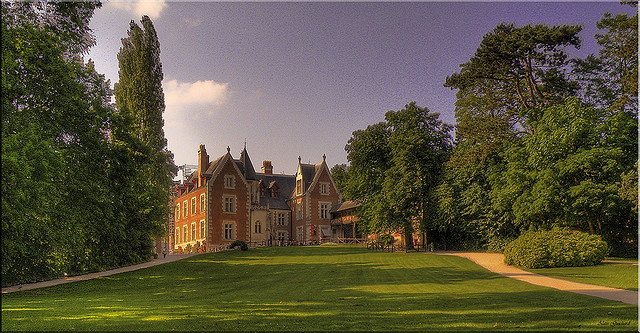
Although not technically a “Château of the Loire,” this large mansion is located just 500 meters from and connect to the Château d’Amboise by way of an underground passageway and is notable mostly for its most famous resident, Leonardo da Vinci. In 1515, King François I invited the Italian painter and inventor to Amboise and offered him the manor to use as a home and studio. When Da Vinci arrived in 1516 he came with three paintings, including the famed Mona Lisa, and lived in the mansion for the last three years of his life. Visitors to Amboise should not hesitate to hop on over to Clos Lucé, where you can peruse a museum that includes forty models of various machines designed by Leonardo.
Langeais
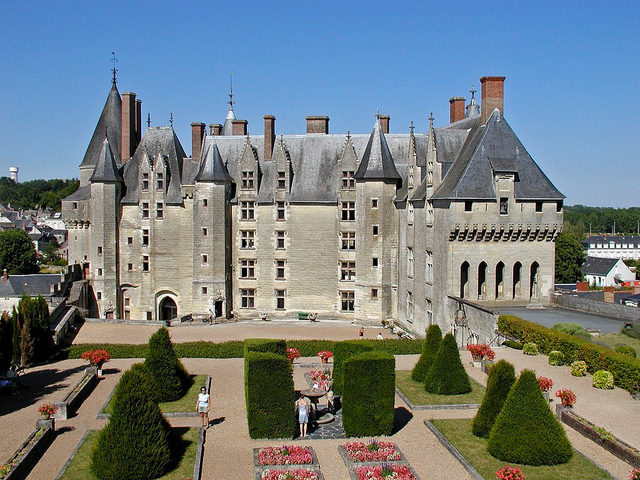
If you are looking to see a variety of different styles of architecture on your castle tour of the Loire, you may want to stop by the Château de Langeais, which shows off a perfect example of Medieval French architecture. Because of its location near the Brittany frontier, this castle long played a part in the battle between the French and English. The structure dates back to the 10th century and was built at a strategic location on a cliff overlooking the Loire River. The castle was actually fortified and expanded under the rule of Richard I of England (when English kings ruled this region of France) until King Philippe II of France recaptured the castle in 1206. The castle was also where Anne of Brittany and King Charles VIII wed, thus uniting France and Brittany. Today, the dark and ominous looking castle is replete with a great collection of Medieval tapestries.
So, what do you say? Are you psyched to visit? If so, here are some links that can help get you started planning your visit to the Loire Valley:
- Loire Valley orientation guide
- Getting from Paris to the Loire Valley
- How to get from Paris to Tours
- Hotels in Tours
- How to get from Paris to Amboise
- Hotels in Amboise
Blois photo: pepsiline
Cheverny photo: phileole
Clos Lucé photo: @lain G
Langeais photo: sybarite48